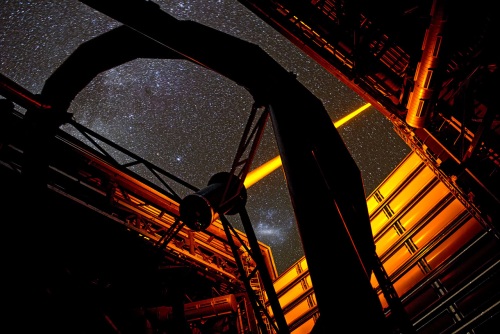
A new and more powerful laser called PARLA has been formally accepted for use in creating an artificial star 90 km high in the sky. The device will be stationed at the European Southern Observatory’s (ESO) Paranal Observatory and is considered a crucial part of the Laser Guide Star Facility at ESO’s Very Large Telescope.
A bit more specifically, the new laser source will allow astronomers to probe the turbulence in the layers of the atmosphere above the telescope. The information they gather will be used to adjust the telescope’s deformable mirrors in real time in order to correct disturbances associated with the constantly moving atmosphere and provide a sharper picture.

An artificial star is created when the laser interacts with the 10-km-thick layer of neutral sodium atoms in the earth’s mesosphere, as it causes the atoms to fluoresce (atomic sodium has an optical transition at a wavelength of 589 nanometers and the laser’s parameters are tuned to excite the atom).
PARLA delivers up to 7 watts of output and has proven quite stable and reliable. It uses similar technology to that which will be used in the four lasers of the future Adaptive Optics Facility (still in development at ESO). Worth noting is that PARLA will include new solid-state Raman fiber laser technology being developed at ESO for the ESO Adaptive Optics Facility, which will allow ESO researchers to perform more challenging programs than ever before.
PARLA is replacing the original PARSEC dye laser that’s reached the end of its road following six years of service. The upgrade is expected to simplify laser operation and give astronomers greater flexibility when planning observations.
Story and images via eso.org
Advertisement
Learn more about Electronic Products Magazine





